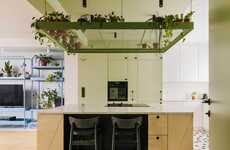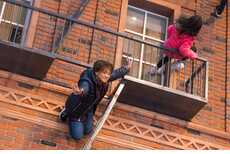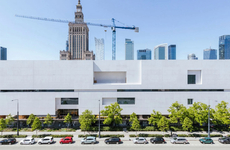
Poland's 'Krzywy Domek' Puts Slanted Buildings Back in the Spotlight
Michael Hines — December 11, 2010 — Art & Design
References: odditycentral
I want to know why it took so long for me to see Poland's Krzywy Domek, or "crooked house." The Leaning Tower of Pisa sits only slightly askew, yet it is 10 times more famous than the Krzywy Domek.
The Krzywy Domek was originally built as part of a shopping center in Sopot, Poland. Szotynscy Zaleski was inspired to build the Krzywy Domek after seeing the drawings of Per Dahlberg and Jan Marcin Szancer, which can be found lining the walls of the crooked house.
The Krzywy Domek was originally built as part of a shopping center in Sopot, Poland. Szotynscy Zaleski was inspired to build the Krzywy Domek after seeing the drawings of Per Dahlberg and Jan Marcin Szancer, which can be found lining the walls of the crooked house.
Trend Themes
1. Skewed Architecture - Opportunity for architects to play with unconventional designs and challenge the norms of traditional architecture.
2. Quirky Tourist Attractions - Opportunity to create unique and unconventional tourist attractions that offer a different experience than traditional landmarks.
3. Surrealist Theme Parks - Opportunity to create theme parks that challenge traditional notions of design and reality.
Industry Implications
1. Architecture - Architects can experiment with unusual designs and unconventional shapes in their projects as a way to differentiate and attract clientele.
2. Tourism - Tourism industry can capitalize on unique and unconventional attractions that offer fresh experiences and attract non-traditional tourists.
3. Entertainment - Entertainment companies can offer visitors immersive and unconventional experiences through twisted and surreal-themed attraction parks.
5.1
Score
Popularity
Activity
Freshness















